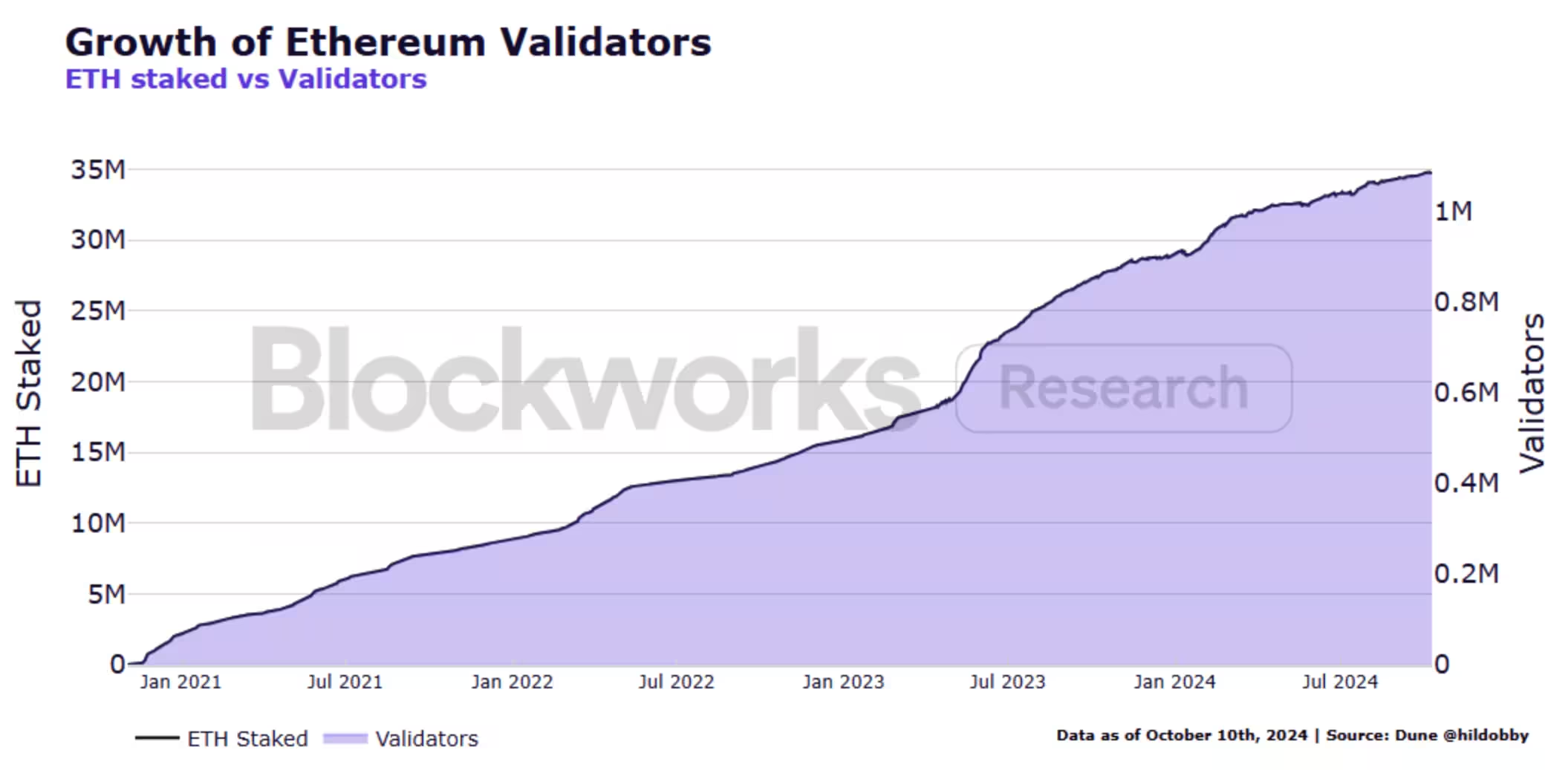Almost 70% of institutional investors in Ethereum (ETH) are participating in ETH staking, with 60.6% of them using third-party staking platforms.
Ethereum Staking Landscape At A Glance
According to a report by Blockworks Research, 69.2% of institutional investors holding Ethereum are engaged in staking the platform’s native ETH token. Of these, 78.8% are investment firms and asset managers.
Related Reading
Notably, slightly more than one out of five institutional investors – or 22.6% – of the respondents said that ETH or an ETH-based liquid staking token (LST) constitutes more than 60% of their total portfolio allocation.
The report notes a seismic transformation in the Ethereum staking landscape since the network transitioned from a proof-of-work (PoW) to proof-of-stake (PoS) consensus mechanism during the Merge upgrade.
At present, there are close to 1.1 million on-chain validators staking 34.8 million ETH on the network. Following the Merge, Ethereum network participants were allowed to withdraw their ETH only after the Shapella upgrade in April 2023.
After the initial phase of ETH withdrawals, the network has seen steady inflows, indicating strong demand for ETH staking. At present, 28.9% of the total ETH supply is staked, making it the network with the highest dollar value of staked assets, valued at over $115 billion.
It’s worth noting that the annualized yield from staking ETH is around 3%. As more ETH is staked, the yield decreases proportionally. However, network validators can also earn additional ETH through priority transaction fees during periods of high network activity.
Third-Party Staking Overshadows Solo Staking
Anyone can participate in ETH staking, either as a solo staker or by delegating their ETH to a third-party staking platform. While solo staking gives the staker full control over their ETH, it comes with a high entry barrier of staking at least 32 ETH – worth more than $83,000 at current market price of $2,616.
Conversely, holders can stake with as little as 0.1 ETH through third-party stakers but must give up on some degree of control over their assets. Recently, Ethereum co-founder Vitalik Buterin stressed the need to lower entry requirements for ETH solo stakers to ensure greater network decentralization.
Currently, about 18.7% of stakers are solo stakers. However, the trend shows that solo…
Click Here to Read the Full Original Article at NewsBTC…
























